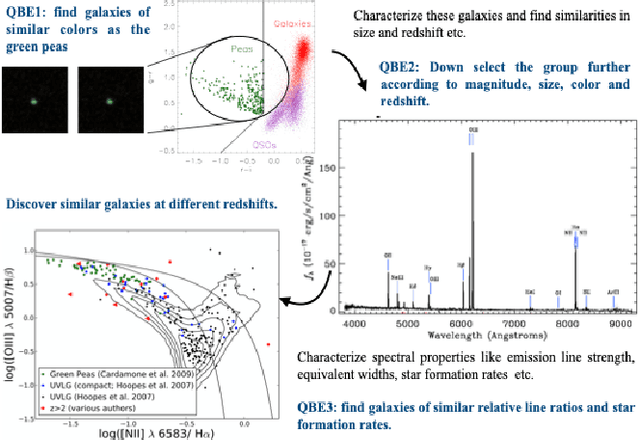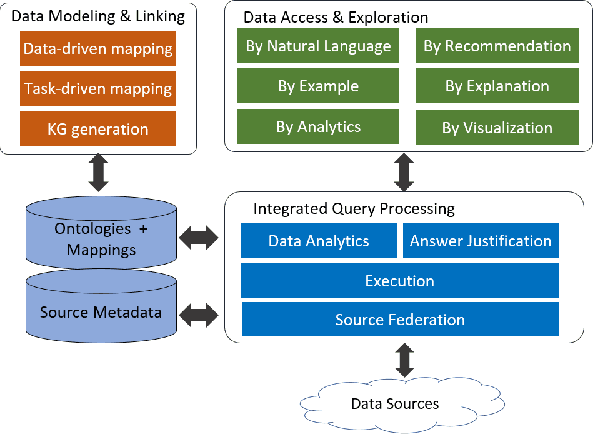Dimitrios Skoutas
Athena Research Center, Greece
MultiCast: Zero-Shot Multivariate Time Series Forecasting Using LLMs
May 23, 2024Abstract:Predicting future values in multivariate time series is vital across various domains. This work explores the use of large language models (LLMs) for this task. However, LLMs typically handle one-dimensional data. We introduce MultiCast, a zero-shot LLM-based approach for multivariate time series forecasting. It allows LLMs to receive multivariate time series as input, through three novel token multiplexing solutions that effectively reduce dimensionality while preserving key repetitive patterns. Additionally, a quantization scheme helps LLMs to better learn these patterns, while significantly reducing token use for practical applications. We showcase the performance of our approach in terms of RMSE and execution time against state-of-the-art approaches on three real-world datasets.
Pre-trained Embeddings for Entity Resolution: An Experimental Analysis [Experiment, Analysis & Benchmark]
Apr 24, 2023Abstract:Many recent works on Entity Resolution (ER) leverage Deep Learning techniques involving language models to improve effectiveness. This is applied to both main steps of ER, i.e., blocking and matching. Several pre-trained embeddings have been tested, with the most popular ones being fastText and variants of the BERT model. However, there is no detailed analysis of their pros and cons. To cover this gap, we perform a thorough experimental analysis of 12 popular language models over 17 established benchmark datasets. First, we assess their vectorization overhead for converting all input entities into dense embeddings vectors. Second, we investigate their blocking performance, performing a detailed scalability analysis, and comparing them with the state-of-the-art deep learning-based blocking method. Third, we conclude with their relative performance for both supervised and unsupervised matching. Our experimental results provide novel insights into the strengths and weaknesses of the main language models, facilitating researchers and practitioners to select the most suitable ones in practice.
ATRAPOS: Evaluating Metapath Query Workloads in Real Time
Jan 11, 2022Abstract:Heterogeneous information networks (HINs) represent different types of entities and relationships between them. Exploring, analysing, and extracting knowledge from such networks relies on metapath queries that identify pairs of entities connected by relationships of diverse semantics. While the real-time evaluation of metapath query workloads on large, web-scale HINs is highly demanding in computational cost, current approaches do not exploit interrelationships among the queries. In this paper, we present ATRAPOS, a new approach for the real-time evaluation of metapath query workloads that leverages a combination of efficient sparse matrix multiplication and intermediate result caching. ATRAPOS selects intermediate results to cache and reuse by detecting frequent sub-metapaths among workload queries in real time, using a tailor-made data structure, the Overlap Tree, and an associated caching policy. Our experimental study on real data shows that ATRAPOS accelerates exploratory data analysis and mining on HINs, outperforming off-the-shelf caching approaches and state-of-the-art research prototypes in all examined scenarios.
INODE: Building an End-to-End Data Exploration System in Practice
Apr 09, 2021



Abstract:A full-fledged data exploration system must combine different access modalities with a powerful concept of guiding the user in the exploration process, by being reactive and anticipative both for data discovery and for data linking. Such systems are a real opportunity for our community to cater to users with different domain and data science expertise. We introduce INODE -- an end-to-end data exploration system -- that leverages, on the one hand, Machine Learning and, on the other hand, semantics for the purpose of Data Management (DM). Our vision is to develop a classic unified, comprehensive platform that provides extensive access to open datasets, and we demonstrate it in three significant use cases in the fields of Cancer Biomarker Reearch, Research and Innovation Policy Making, and Astrophysics. INODE offers sustainable services in (a) data modeling and linking, (b) integrated query processing using natural language, (c) guidance, and (d) data exploration through visualization, thus facilitating the user in discovering new insights. We demonstrate that our system is uniquely accessible to a wide range of users from larger scientific communities to the public. Finally, we briefly illustrate how this work paves the way for new research opportunities in DM.
 Add to Chrome
Add to Chrome Add to Firefox
Add to Firefox Add to Edge
Add to Edge